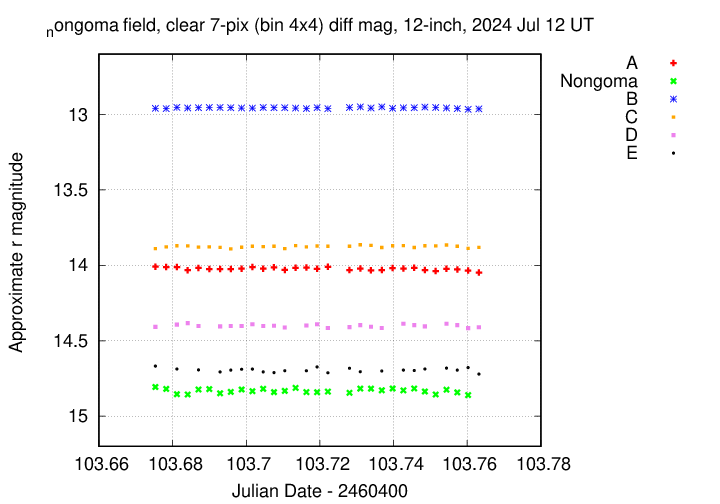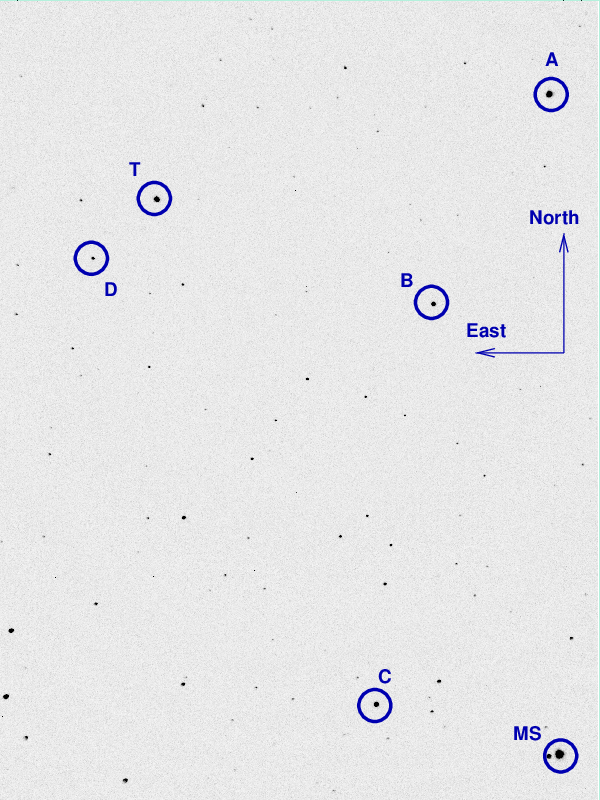
On the night of Jul 11/12, 2024, under fair conditions, I acquired images of the recurrent nova T CrB. This star undergoes outbursts at long intervals of 80 years or so. Its next outburst is predicted to occur soon, perhaps in 2024, and so I've joined the crowd who are monitoring it.
The object is still in its quiescent state, at approximate V = 10.25.
Measurements of the asteroid (1367) Nongoma show it to have an apparent magnitude r' = 14.83.
This recurrent nova brightens from by about 8 magnitudes (!), from V = 10 to about V = 2, around every 80 years. Will we see another outburst this summer?
These observations involved:
Notes from the night:
The picture below shows a cropped image of the field of T CrB from Jun 14/15, 2024. The field of view is about 20 arcminutes across.

I've marked the location of several comparison stars, with magnitudes and names taken from the AAVSO's chart.
star name B V
------------------------------------------------------
A 000-BJS-901 11.190 10.566
B 000-BBW-805 11.840 11.187
C 000-BPC-198 13.049 12.336
--------------------------------------------------------------------------
When the target is centered, the finder TV shows this field:
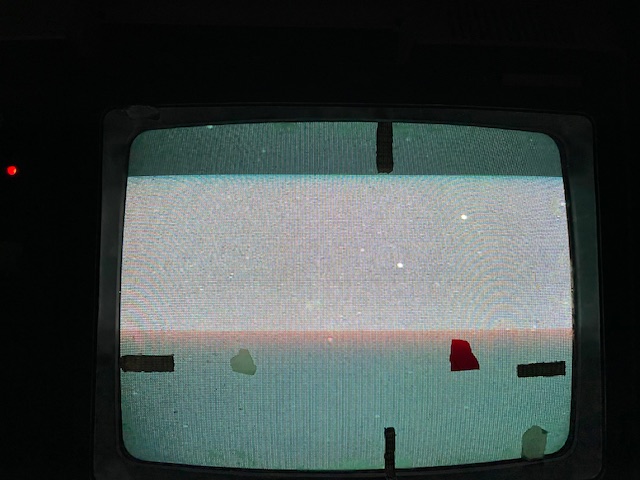
Here's the sky background over the course of the run. Note the thick clouds for most of the run, ruining all those images.
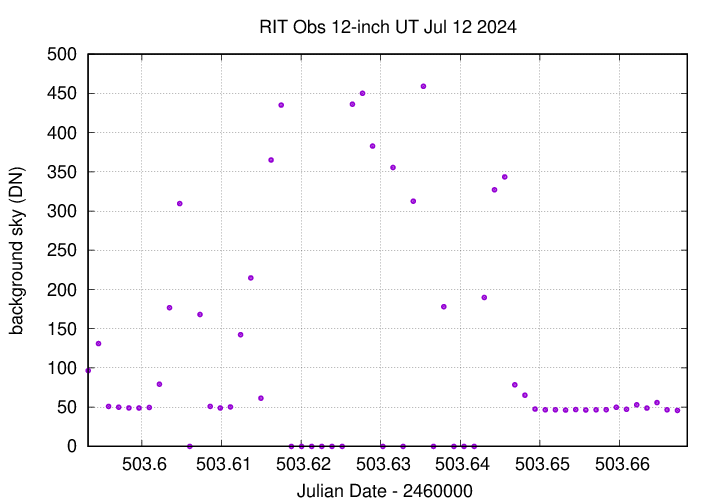
The FWHM was pretty steady in V.
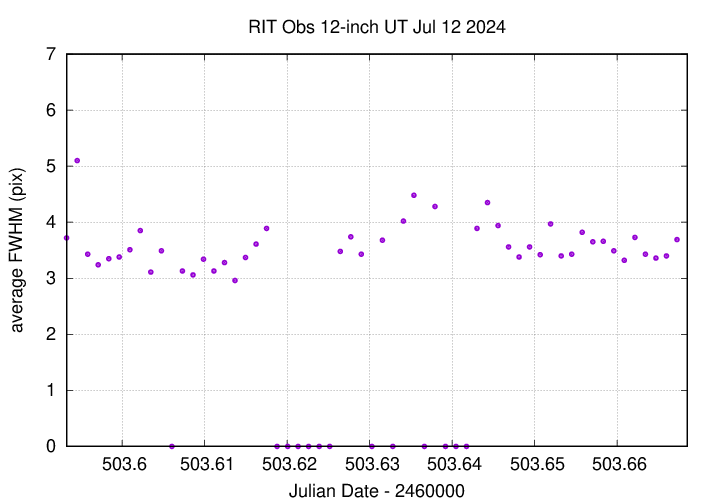
The graph below shows changes in the photometric zeropoint of an ensemble solution of the instrumental magnitudes over the course of the run.
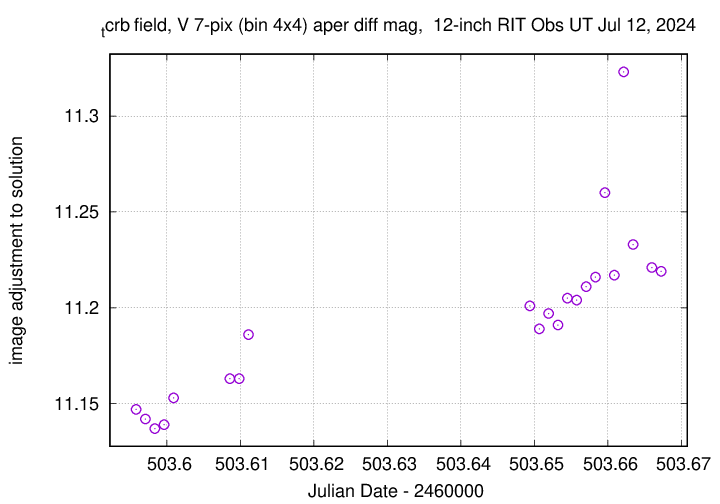
Using aperture photometry with a radius of 7 pixels in V filter (binned 4x4, each pixel is 1.036 arcsec, so a radius of 7.3 arcsec), and 7 pixels in B filter (binned 4x4, each pixel is 1.036 arcsec, so a radius of 7.3 arcsec), I measured the instrumental magnitudes of a number of reference stars and the target. Following the procedures outlined by Kent Honeycutt's article on inhomogeneous ensemble photometry, I used all stars available in each image to define a reference frame, and measured each star against this frame.
Sigma-vs-mag plots show that the floor in V-band was about 0.004 mag, which is vgood. In B-band, it was only 0.007.
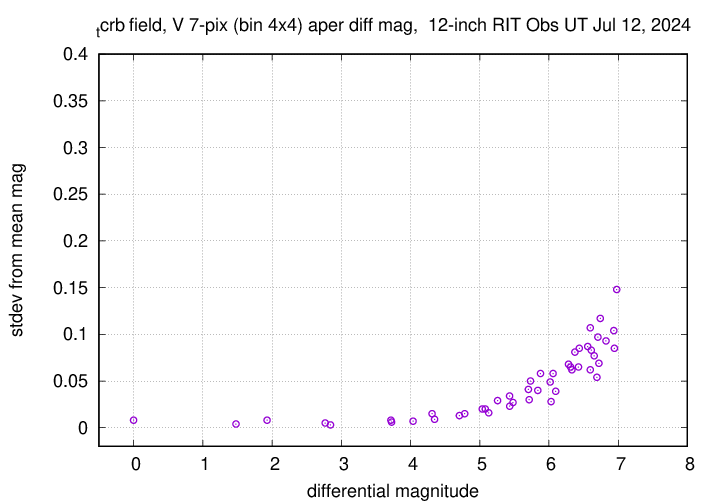
The measurements show relatively steady brightness; not much more to say, given the paucity of good values.
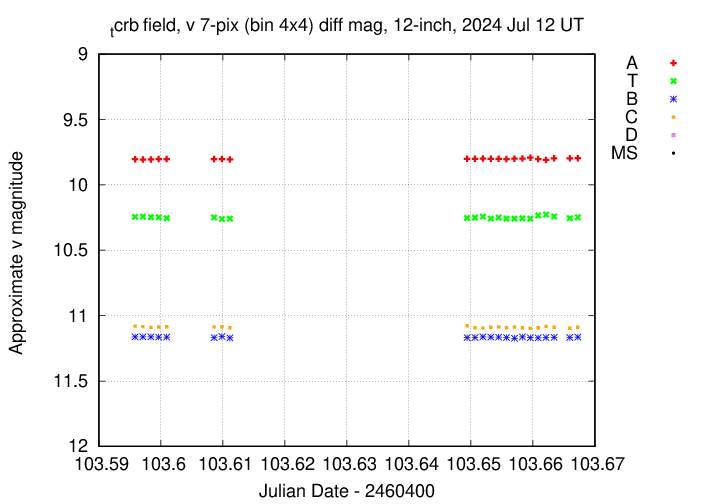
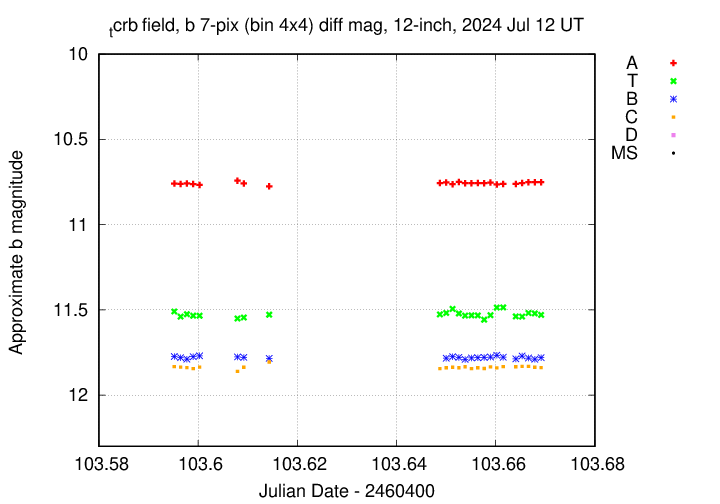
I've submitted these measurements to the AAVSO.
Not much is known about this asteroid. A set of seven nights of measurements of its light curves -- see Wisniewski, W. Z., et al., Icarus, 126, 395 (1997) -- suggests a period longer than one day, with short-term variations up to 0.2 mag.
A colleague mentioned that he might be preparing a campaign to try to pin down the rotation period, but the object is pretty faint: its V magnitude is around 15.5. Could I contribute? I decided to spend some time observing it to find out.
These observations involved:
On this night, the object was near position
RA = 21:13:23.8 Dec = +09:29:19 (J2000)
I observed for about three hours, but fewer than two of them were clear. Still, there was a good stretch of time, and the camera and telescope performed well.
Here's the sky during the observations. Note the clouds at the end -- sigh.
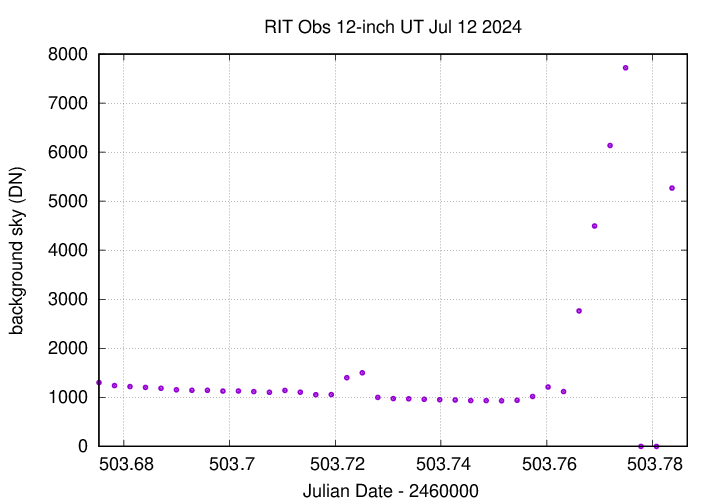
The ensemble zero-point adjustment factor tells a similar story of clouds at the end.
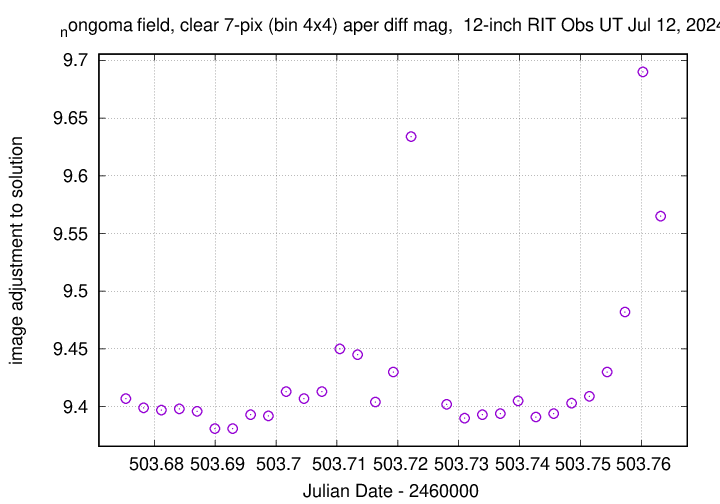
I was able to detect Nongoma clearly in all the images. Using a set of three nearby stars with magnitudes a bit brighter than the target, and colors 0.7 < (B-V) < 0.9, I calibrated the unfiltered measurements to the APASS9 r' passband. The asteroid had an average value of about r' = 14.83, with no obvious variation.
